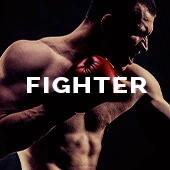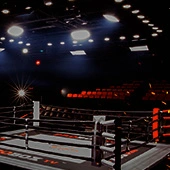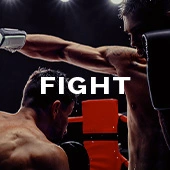Of course, it depends on the math.
The math came to mind listening to a recent advertisement for this weekend’s big heavyweight clash. It called it ‘the fight of the decade.’
If one counts out their decades on a strict calendar accuracy, 2020 is the final year of this decade. Counting them in the spirit of how we often recall time, 2020 is the beginning of something new. We recall the 70s, 80s, and 90s collectively. They all started with year zero.
It makes the language of the ad both truthful and joyfully full of a special brand of boxing bull...hyperbole.
It was hard not to love it.
When the 2020s are looked back on, it is unlikely the heavyweight rematch between lineal king Tyson Fury and WBC titlist Deontay Wilder will be seen as the zenith of the era. It doesn’t matter. Two months into the decade, nothing has been bigger.
That’s big enough. That’s enough period.
Hyperbole is and always has been part of sports. As the 24-hour cable era gave way to the 24-hour media free-for-all we live in now, the constant stream of click bait headlines has never been harder to get through. It can cause instant outrage, support, and debate at a moment’s notice. When emotions settle, it’s easy to overlook it’s all just part of the fun.
It’s a fun that never goes away in boxing.
Part of it is the nature of the sport itself. Football builds every year to a Super Bowl, baseball to a World Series. The hyperbole that surrounds them is loud and voluminous but also largely structural. The faces change year after year, but the events remain.
Boxing’s unstructured nature, multiple weight classes, and lengthy builds mean it never has a single World Series or Super Bowl. Sure, there are fights eliciting comparisons to those seasonal finales, but they don’t promise another next year.
This weekend might be a ‘fight of the decade’ but, with a pair of camera friendly quote machines like Fury and Wilder, it hasn’t come with the sort of singular subtitle some fights rely on.
The best subtitles are hard to forget.
Mike Tyson-Evander Holyfield I: Finally. It said it all. After a cancellation in 1991, a prison stint for Tyson, and three losses for Holyfield, many assumed we would never see these two clash. Then, in 1996, they signed up to fight. The results were memorable. So was the buy rate.
Fight of the Century was a tag applied multiple times, officially and unofficially, to several fights in the 20th century. Jack Johnson-Jim Jeffries and Muhammad Ali-Joe Frazier I both stand out in that regard. Ali was no stranger to fights with fun names: Thrilla in Manila, Rumble in the Jungle, and Drama in the Bahamas are just a few that come to mind.
In other sports, there are moments (almost 40 years later THE catch still brings Joe Montana to Dwight Clark to mind) that are remembered, but they don’t capture the whole sequence of events the way boxing’s subtitles have. The Rumble in the Jungle isn’t just the fight between Ali and Foreman. It’s everything that led up to it. It’s the postponement, the predictions, the hard sell that got butts into the seats in the arena and close circuit venues.
Names are only part of it.
In the weeks and days leading to a big fight, we also get the leaks. This time around, there is the question of what Wilder will weigh this weekend? Is Tyson Fury really knocking out all his sparring partners?
Nothing says fight week like stories of prone sparring partners devoured by a hungry tiger.
The combination of ESPN and Fox promoting together has meant tons of coverage, some serious, some advertorial. Neither network can approach the event in any pure, straight journalistic fashion. They aren’t just covering.
They’re selling for their employer.
For fight fans, it means more articles to read, more videos to digest, more conversation to mull, more ways to anticipate.
That’s what it’s all about after all: selling the possibilities. It’s the carnival barker, peek behind the curtain element of boxing. The NBA finals sell no matter who is in them. TV ratings might ebb and flow but the arenas are always full no matter who is playing. Boxing doesn’t have that luxury. Each major event carries its own need to build an audience.
Some fights are easier than others but all require a unique, individual focus. The events that succeed most do the best job of getting fight fans into a frenzy that spills over to others, bringing new eyes and interest along with them.
Wilder-Fury II has been well built, over a year in the making, and whether it is a fight of the decade sort of battle or not, it’s the fight of the moment everyone wants to see. We don’t know who will win. We don’t know how.
We just know we’re ready to see it.
Then the final bell will ring and it will be on to searching for the next event. There will be tweets, quotes, challenges, shoving matches, and promises of violence all over again. Hyperbole feeding hyped.
Enjoy the rest of the week.
Cliff Rold is the Managing Editor of BoxingScene, a founding member of the Transnational Boxing Rankings Board, and a member of the Boxing Writers Association of America. He can be reached at roldboxing@hotmail.com




